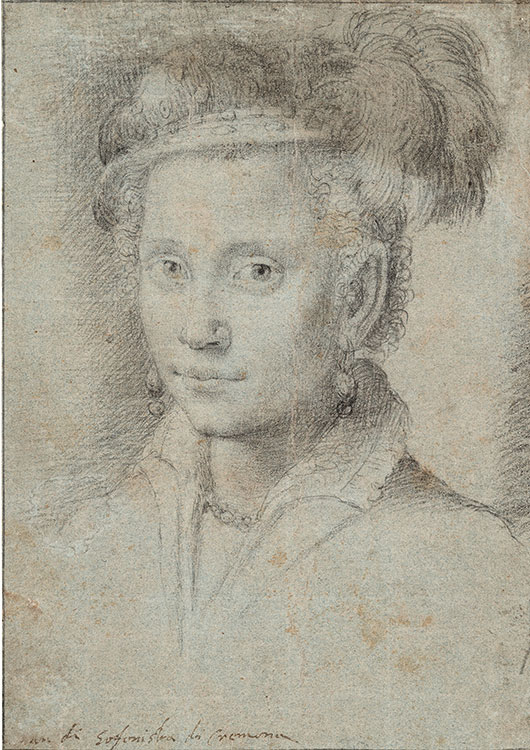
Anguissola was born to a noble northern Italian family and, together with her six siblings, received a comprehensive humanistic education and training in the art of painting. Perhaps because her gender precluded her from studying anatomy or working with nude models, she focused on portraiture, often turning to sitters in her familial and social circles. This study, which might be a self-portrait, is an example of the artist’s direct yet sensitive approach to the portrait genre and her assured drawing technique. Although Anguissola’s drawing skill was praised by her contemporaries, extremely few sheets by the artist survive today.
Sofonisba Anguissola
Italian, ca. 1535–1625
Portrait of a Lady with a Feathered Hat (Possibly a Self-Portrait), ca. 1575–1600
Black chalk on gray-blue paper
Kupferstich-Kabinett, Staatliche Kunstsammlungen Dresden, INV. NO. C 1937-785
© Kupferstich-Kabinett, Staatliche Kunstsammlungen Dresden
John Marciari, Charles W. Engelhard Curator and Department Head
Sofonisba Anguissola was the most famous woman artist of the Italian Renaissance. She was born in Cremona, Italy, and was trained as a painter by Bernardino Campi, the leading artist in that city, but she also received a humanist education. Her fame as a painter quickly spread, not only in Italy but across Europe, and in 1559 she was invited to Spain to serve as a lady-in-waiting to the queen. While in Spain, she painted many portraits of the royal family and other members of court. She spent more than a decade in Madrid before marrying a Sicilian nobleman and returning to Italy.
Relatively few drawings by Sofonisba survive, but the Dresden sheet agrees in style with the few secure examples, and the early inscription at the bottom of the sheet also attributes it to her. It could in fact be an image of the artist herself. Sofonisba painted a series of self-portraits, more than any woman before her time, and the shape of the face, the almond-shaped eyes, and the slightly pointed ears of the woman in this drawing resemble those in the paintings, as does her sidewards but direct gaze. The open-necked dress and feathered hat would have been unacceptable at the Spanish court, however, so this drawing was probably made either just before her departure from Italy, or else just after her return.
